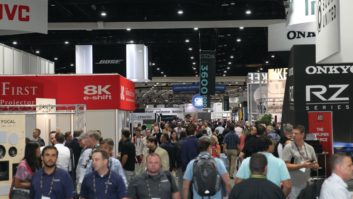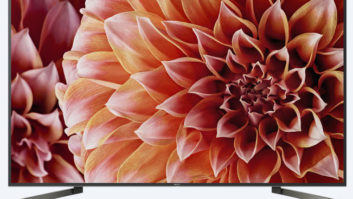LAS VEGAS – The audio industry made the shift from old audio to new audio at International CES, where products in ascendant sectors proliferated and those in shrinking sectors – HTiBs, compact systems and docking speakers – were harder to find than cabs at the Sands Convention Center.
Ascendant sectors include soundbars, multiroomwireless audio systems, high-resolution home and portable audio, headphones and Bluetooth speakers.
Their growth couldn’t offset rapid declines in sales of HTiBs, compact systems and portable MP3 players in 2014, when combined home and portable sales fell an estimated 4 percent to $8.5 billion, Consumer Electronics Association statistics show. The association, however, is calling for 4.4 percent growth in 2015.
Surround sound also emitted new energy at CES, where companies not only showed off electronic components with Dolby Atmos surround but DTS announced broad support from audio companies this year to roll out its competing format, called DTS:X.
Here are the most prominent audio developments at CES:
Wireless audio: Newcomers entered an increasingly crowded wireless-multiroom-audio market to give the leading incumbent, Sonos, additional competition with a mix of brand-proprietary and licensed open-platform technologies. Though the technologies appeared mostly in active one-piece tabletop speakers, more soundbars also incorporated the technology.
Wireless advances, however, weren’t limited to multiroom applications. The use of wireless for home theater also advanced, with Klipsch and Enclave launching their WiSA-certified active speakers for home theater, joining certified speakers available from Bang & Olufsen and Sharp’s WiSA-certified Blu-ray/SACD player.
High-resolution audio: New products flooded the show, where musician Neil Young announced the opening of his high-resolution download store, Pono Music World, to compete with at least seven other download sites available in the U.S.
Dealers found new high-res component DACs for the home at prices up to and exceeding $3,000, integrated amplifiers with high-res decoding, plenty of new portable USB headphone-amp/DACs with highres capabilities priced from $69 to $2,500 and up, and a greater selection of wireless multiroom-audio speakers with high-resolution decoders.
Dealers also found an expanded though still-limited selection of high-resolution portable players and the first two high-resolution aftermarket car audio products.
Soundbars, sound bases: The products have quickly replaced HTiBs as the video-sound solution of choice.
Soundbars and sound bases improve flat-panel sound and require minimal wiring and space. They’re also being used more for music playback, hence the growing number with Bluetooth and wireless multiroom- audio technology.
More bars and bases sported switching HDMI inputs and outputs, eating into demand for A/V receivers.
Without soundbars, component audio sales would be down, driven down mainly by falling sales of traditional in-room passive speakers.
Bluetooth speakers: The portable- audio segment continued to come into its own, showing signs that market saturation won’t come in 2015 because consumers are buying more than one Bluetooth speaker to meet varying needs. Those needs include ruggedized, waterproof- and water-resistant models for active outdoor users to in-ceiling light/speakers for in-door use.
Dealers also found a growing selection of floating speakers, including a model from Monster, more speakers that can be set up in pairs to widen the stereo sound stage, and Logitech brand Ultimate Ears plans for a summertime software update to connect more than 10 of its UE Boom and/ UE Megaboom speakers at once.
DTS:X emergence: Dolby Atmos object-based surround-sound technology, promoted as the biggest advance in surround since the launch of the Blu-ray disc, was heard all over Vegas onsite and offsite. But DTS showed also up to demonstrate a 22.2-channel version of its competing format in public and a 7.1.4 implementation in private.
The company positioned DTS:X as a flexible format with “forgiving” speaker placement, compatibility with Atmos speaker configurations, and ability to coexist inside AVRs along with Atmos and Auro-3D (see story at right).
Networked audio components: Whether AVRs, preamp/processors, or high-end two-channel integrated amps, more home-audio components got network connections to stream content from PCs or the Cloud. Not even the high end is immune. Krell and D’Agostino, for example, launched integrated amps with the capabilities at $6,000 and $48,000, respectively.
PC-connected components: USB audio inputs appeared in more and more components as music libraries shift to computers, servers, and mobile devices.
More high-end components appeared with 24-bit/192kHz asynchronous USB audio inputs to handle high-resolution audio files.









